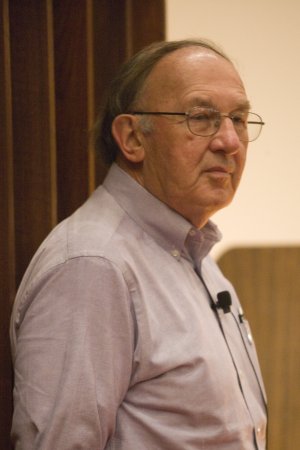Director's Corner
14 February 2008
 Barry Barish |
P5 – What goes around, comes around
In 2001, Jon Bagger and I served as co-chairs of a long-range planning subpanel for HEPAP, the US’ High Energy Physics Advisory Panel, which recommended a 1-TeV scale linear collider as the highest priority long-term goal for US high-energy physics. Another very important recommendation of that same panel report was to form a new panel that we called the Particle Physics Project Prioritization Panel, or P5. This P5 panel has recently been reconstituted and is undertaking a new long-range study that will probably prove quite important for the future course of the US ILC R&D efforts. The initial P5 meeting took place at the beginning of February at Fermilab, and one session was entirely devoted to efforts globally and in the US towards a linear collider.
What was the original motivation for creating the P5 panel? At the time, we noted the need to create and update a roadmap for the field, recognising that this would require priorities and balanced investments in high-energy physics across subfields and laboratories. Our report stated that “important constraints affect our planning, including limited human and financial resources, and the need to dovetail our program with those of other countries and other fields closely connected to our own. Proper prioritization is essential to obtain the highest possible return on investment. Difficult decisions - involving scientific sacrifices - will need to be made to allocate our resources wisely.”
The P5 panel was created to fulfil that role, and Abe Seiden served as the first chair. The panel succeeded in making some very difficult decisions over the past few years, as well as recommending a programme for the future that identified important forks in the road where new information would be available. For these points, they recommended reevaluation and updating the programme. The P5 panel has recently been reestablished to do such an update with new budget guidelines. The panel has a new chair, Charlie Baltay, and new members. They have been charged with the task of making a new ten-year plan for the US programme under different budget scenarios and producing a report on a very short timescale. This planning exercise has now taken on added significance due to the budget actions resulting from the omnibus budget bill for the fiscal year 2008 (FY08) that had such large negative impacts on our field, including effectively ceasing R&D work on the ILC for this fiscal year.
Considering the uncertainties in the US regarding future support for the Global Design Effort/ILC efforts, the review and report of P5 should insure that peer review will be fully taken into account as programmatic decisions are made at the Department of Energy regarding future support. At the P5 meeting two weeks ago, we had the opportunity to present the goals and plans for continuing the work of the GDE toward a robust proposal to our governments if the science case is established by exciting new results at the TeV scale from the LHC, as we expect. Our presentations covered the science, the detectors and the accelerator, our accomplishments so far and our plan for the future, taking into account the impact of the FY08 budget actions and expected level of a revived budget in FY09 and beyond. The presentations covered both the ILC and other long-term options, like the Compact Linear Collider (CLIC) drive beam scheme that is being developed for a multi-TeV electron-positron collider at CERN.
|
P5 ILC session on 1 February
|
We appreciate having had the opportunity to present our science case and our proposed R&D programme both for the accelerator and detectors (see also the US ILC talk and the GDE design presentation below). P5 has a very difficult and important task as we find the US high energy physics programme at a crossroads. We wish the committee well and look forward in anticipation to the report, which will be submitted this spring.
-- Barry Barish
